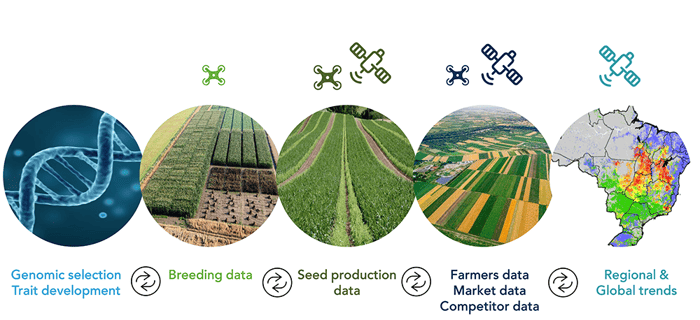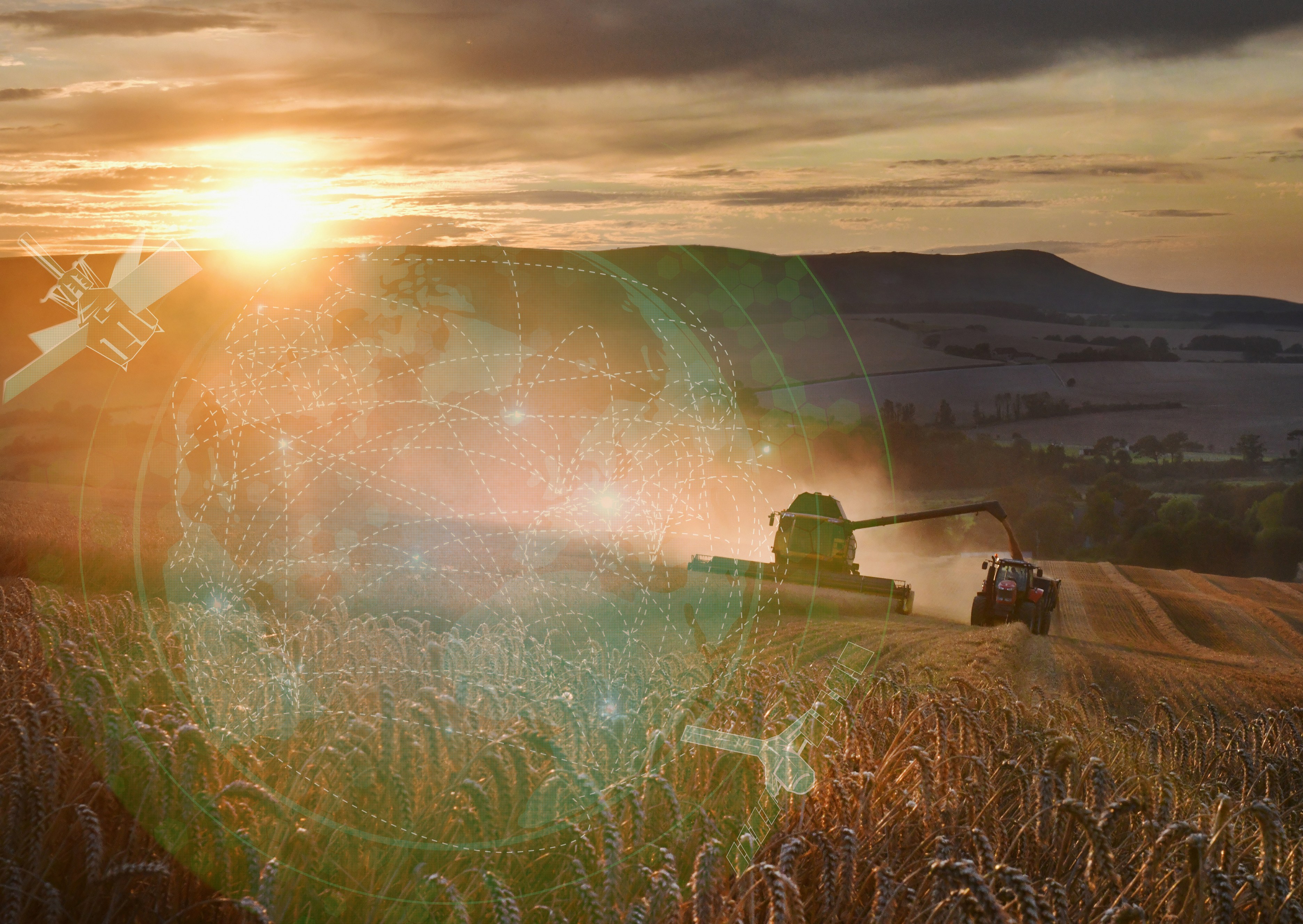EO data and agricultural expertise! A tasty cocktail
The agricultural sector has changed over the last decades, be it due to our changing climate, new crop varieties, more advanced machinery, a larger farm size, new scientific insights, or changing legislations. These changes had a large impact on how farmers need to manage their daily operations. Restrictions on pesticide use, for example, led to changes in pest and disease control. The decision-making process has been experience-based for a long time, but due to these changes, a shift is visible, at different levels, towards a more data-driven approach.
The digital transformation is unfolding at a pace that outruns the development of experience-based policy for public and private organizations, and we need to speed up technological developments on digitization and data fusion. These must provide new information and insights that will enable us to better assess, plan and observe our socio-economic fabric and – above all - make a better balance with our natural resources.

This evolution is partly due to the increasing amount of Earth observation data and the rapidly evolving remote sensing technology. Although satellite data has been around for a while, thanks to the European Copernicus program, Earth Observation has finally become mainstream. The ever-increasingly availability of data enables us to develop user-friendly platforms, and provide analysis-ready information able to support the decision-making process for various agricultural purposes.
Projects like ESA WorldCover and ESA WorldCereal for example, set up for global land cover and global cropland monitoring, could never exist without the huge amounts of available Sentinel satellite data. Weekly agricultural crop monitoring at field level via WatchITgrow would not be possible if we hadn’t develop the CropSAR service to fuse Sentinel-1 radar data with Sentinel-2 optical data.
Providing the right data to the right user
Of course, data alone is not enough. Thanks to the rise of the big data infrastructure programmes on cloud computing (e.g. Terrascope, DIAS, ESA-MEP) and the use of artificial intelligence we are able to support the agricultural sector not only by providing EO data, but also by integrating this data as information - into the user’s familiar tools and processes. Up to a couple of years ago we mainly focused on converting the raw data into processed information and providing these products to our users via an online data catalogue. However, different users have different needs, and a more tailor-made approach was and still is needed to ensure maximal uptake of EO products. Now, we even deliver end-to-end solutions allowing our users to process and analyze data fit to their specific needs.
Seed breeders, as an example, need very detailed information, up to the plant level, obtained with high precision and frequency. Through MAPEO, we are able to lower the barrier of using drone-technology to these users, enabling a large uptake with a clear benefit and return on investment. Seed breeders are able to monitor field trials and extract innovative plant trait information in just a few clicks.
Farmers, on the other hand, have quite different needs. Traditionally, EO has focused on providing information on the performance of the field, and trying to identify the underlying causes, but the possibilities are much greater! Through the WatchITgrow platform, we provide not only information on current performance. By combining different data sources we provide a complete diary of the field’s history. Which crops have been planted on a specific parcel? How well did they perform? Which issues have been observed? Combine these functionalities of WatchITgrow with its integration possibilities to connect with external services, and every farmer can easily use this EO-based platform in daily operations.
While some users really need the information to be readily interpretable, others just want to use or integrate EO data themselves. That’s why we are also delivering data to a number of portals, such as ASIS, MARS and WaPOR, enabling other service providers to get access to high end EO information products. We can easily set up workflows to automatically sent data to those who want to integrate EO data products in their daily operations, for example through the Terrascope platform.
Drought overview of the Agricultural Stress Index (ASI) mid-March 2021.
Serving the agricultural value chain
From seed breeders, input providers, farmers, auctions, insurance, processing industry, governments, and international organizations. We support different actors in the agricultural value chain. While for each of these actors, an added value is being created individually, much can be gained by combining the information over the different actors and over the different levels, i.e. the sum of the parts is greater than the whole. By providing feedback loops between these different actors, new insights lead to new developments, which lead to improved operations. By working together with insurance companies for example, we get a better overview of yield losses and their underlying causes, which in turn will enable us to provide a better yield estimation service to the farmers and processing industry.
With more than 20 years of experience in using satellite, aerial and drone imagery in an agricultural context, the mission has always been clear from the beginning: providing end-to-end EO-based data, information and services to accelerate a more sustainable world. And with a wide range of imaging technologies available, which will only keep evolving strongly, we hold the promise to improve operational processes and support you to see the forest for the trees! Keep an eye on our remote sensing blog or subscribe to our newsletter to stay informed about our agricultural expertise, products and services.




/Blog_CORSA_1200x650.png)
/Blog_WorldCereal_1200x650.png)
/lewis-latham-0huRqQjz81A-unsplash.jpg)